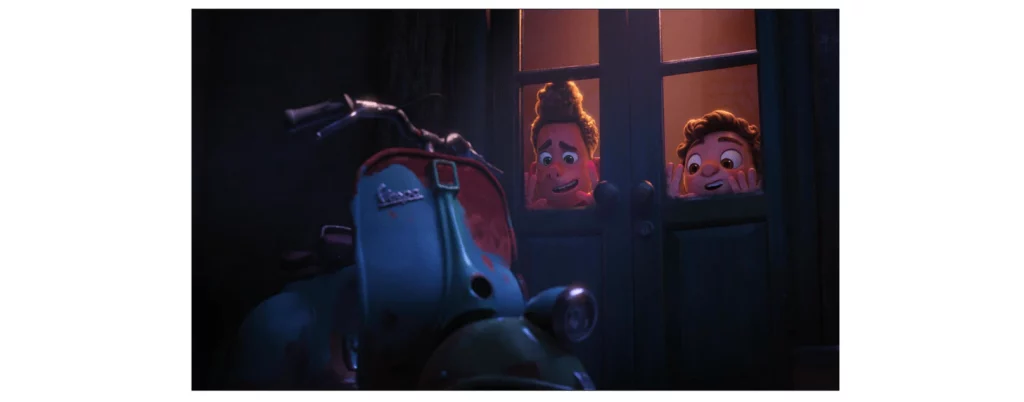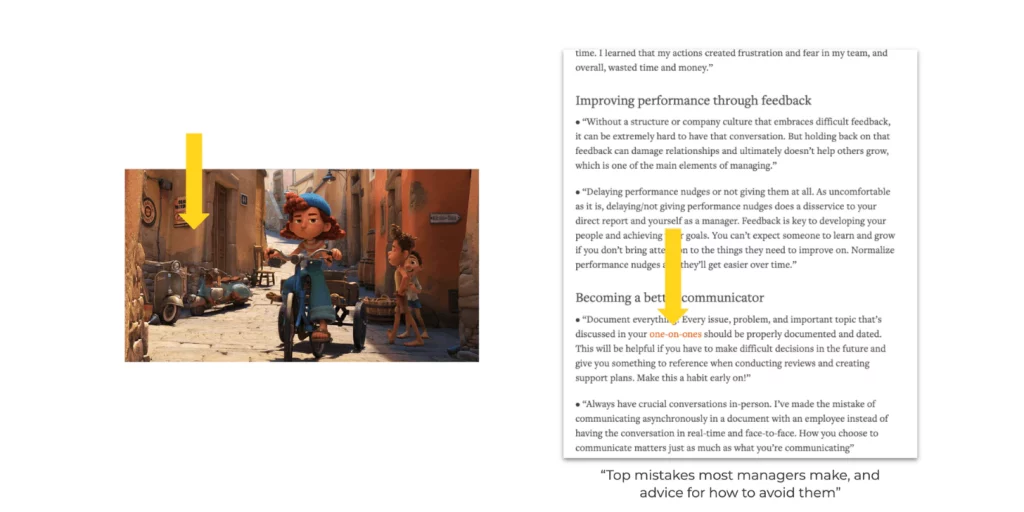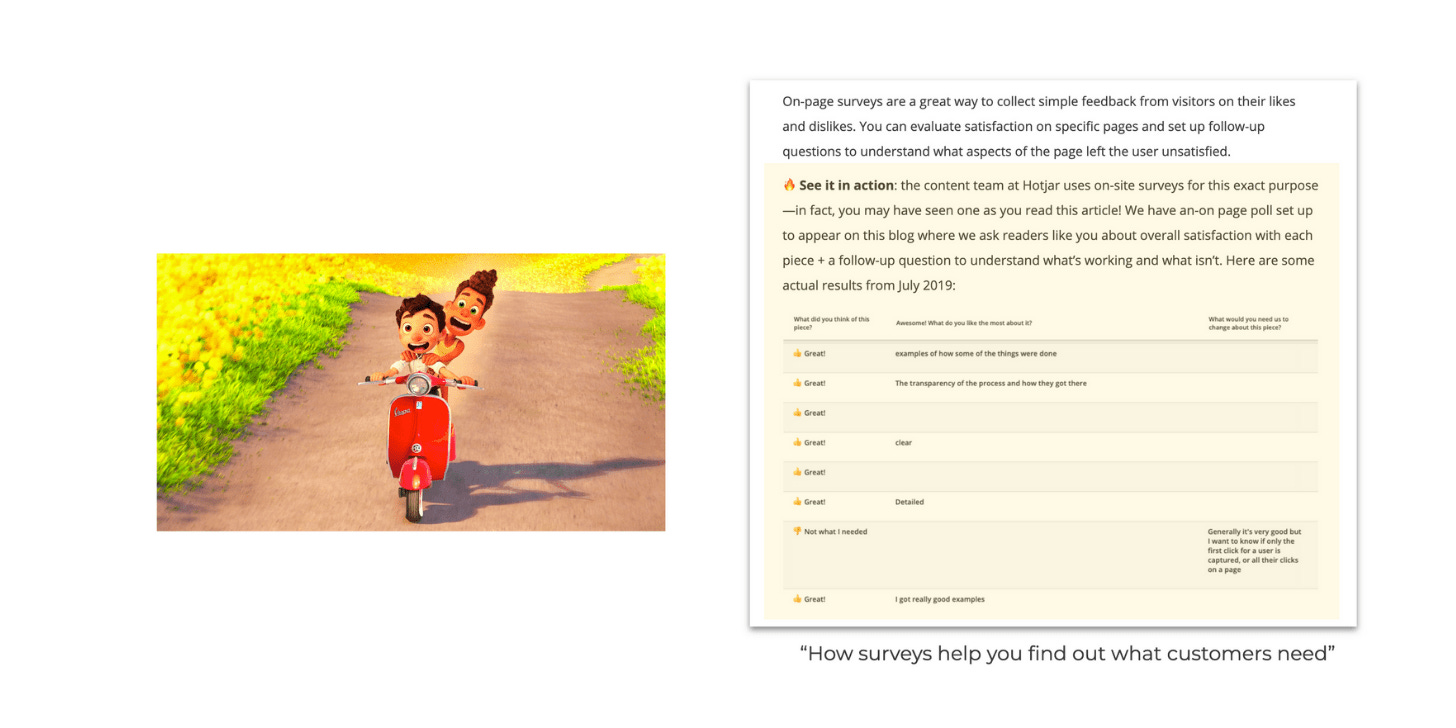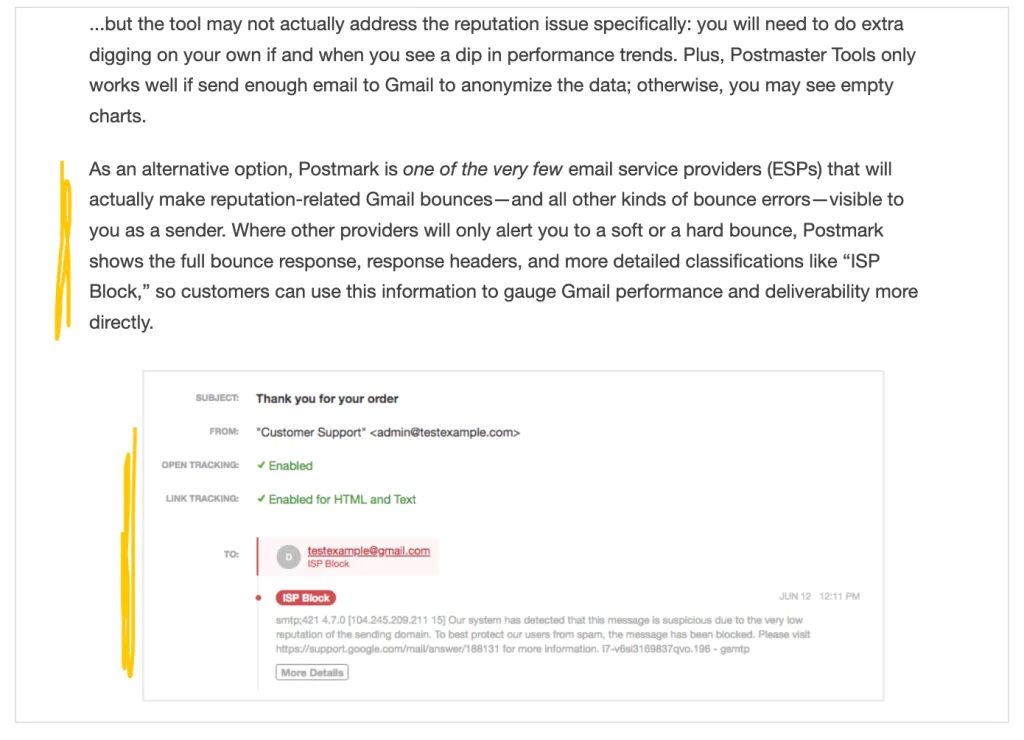You are reading contentfolks—a fortnightly blend of sticky notes, big content ideas, and small practical examples. Thank you for being here! ~fio
Hey 👋
Almost exactly one year ago, I dedicated an issue of this newsletter to the content marketing tactic I called product-led content: content that strategically weaves a product or service into the narrative and uses it to illustrate a point, solve a problem, and/or help the audience accomplish a goal.
One year later, this is still a rather under-utilised tactic, so I thought I’d try to inspire you to give it a try again—but this time, we’ll take a detour into movie land first.
How products show up on the big screen 🛵
When a product appears in a movie, it’s usually called ‘product placement’—and it happens on three different levels. Let’s use Pixar’s Luca (2021) as an example:
Level 1: ‘blink-and-you-miss-it’

In the first level, the product is present but your attention is not directed towards it.
Here, you may or may not notice the two Vespa scooters on the left: they are there, but mostly as background; if you’re not paying close attention, you might miss them.
Level 2: direct mention

In the second level, your attention is actively directed towards the product.
Here, the characters are actively talking about and looking at a Vespa—which means you, too, are now actively looking at it and can’t miss it.
Level 3: crucial plot point

In the third level, you see the product as an integral part of the story.
Here, the characters dream about the adventures they’d have if only they owned a Vespa; as the scene unfolds, you start associating Vespas with ideas of fun and freedom, and might even imagine yourself riding one (I certainly did).
Content marketing works in a similar way
Keep these levels in mind as we switch back to content marketing. Like in movies, there are three main ways a product can show up in a blog post or guide:
Level 1: ‘blink-and-you-miss-it’

This is a very common execution: the product is present, but your attention is not directed towards it. Usually, there’s a link to a product page somewhere in the piece, but you can easily ignore it and never notice that the company behind it also has a relevant product/service to offer.
Level 2: direct mention

Quite often, your attention is actively directed towards the product with on-page CTAs and/or invites to get in touch with a sales rep. This example is one step ahead compared to Level 1, in that at least you get a direct product mention—but unlike the movie example, you still probably have no idea what the product or service actually looks like.
Level 3, crucial plot point

With a product-led content approach, you see the product as an integral part of the story. In this old Hotjar example, you’re reading about investigating what your customers need while also being given examples of how Hotjar surveys can help you do exactly that. You see what the tool looks like and how it works; as you keep reading, you may even start thinking of it as THE solution to the problem that brought you to the article in the first place.
💡 A practical Level 3 example 💡
Last summer, we did some product-led edits on a Postmark article titled How to find and fix Gmail reputation-based bounces in 4 steps. It’s a technical topic for a niche audience with a very specific problem—and Postmark, as you probably guessed, helps solve parts of it.
This was the perfect opportunity to weave a product into the narrative (Level 3) instead of just linking to it (Level 1) or adding a passing mention/CTA (Level 2).
First, we found a way to introduce Postmark within the larger narrative, in addition/opposition to other common methods of identifying the problem. While at it, we also found opportunities to integrate screenshots from the product:

Later in the piece, we identified a section where the super-knowledgeable Postmark team could add its expertise while showcasing Postmark’s product dashboard again:

Note: if you look at it in isolation, this is a relatively small edit. It’s when you apply this product-led logic to multiple content pieces that it starts making a difference, helping your audience understand what the product looks like, what it can do, and what it can do for them regardless of where on your website they landed.
To sum up, Level 3 = 🏆
With Level 1 and 2 content, you don’t always notice that the company behind the writing also has a product or service that can help you; you also have no way of imagining yourself using it, because you don’t know what it looks like or what it can do.
Whereas level 3 content:
- Addresses a readers’ initial question, while also
- Informing them about the product and how it can help (including showcasing it directly), weaving it in naturally, without
- Breaking the flow or using a hard pitch.
It’s one of my favourite ways to create high-utility content that will make a difference for both customers and businesses alike.
…give it a try?

PS: last Christmas I spotted what I think is the most Level 3 movie trailer I’ve ever seen. Talk about making the entire story hinge around ONE product!